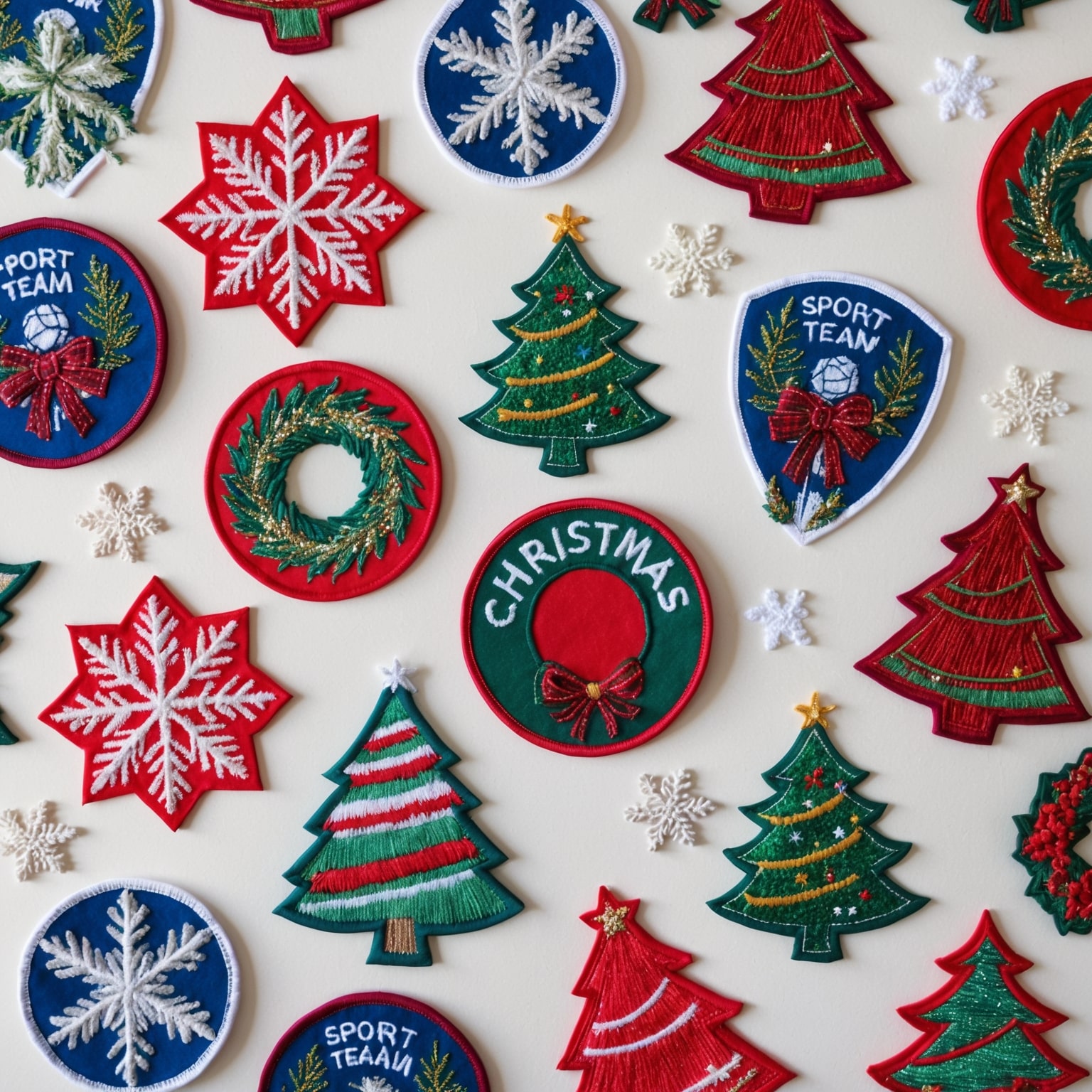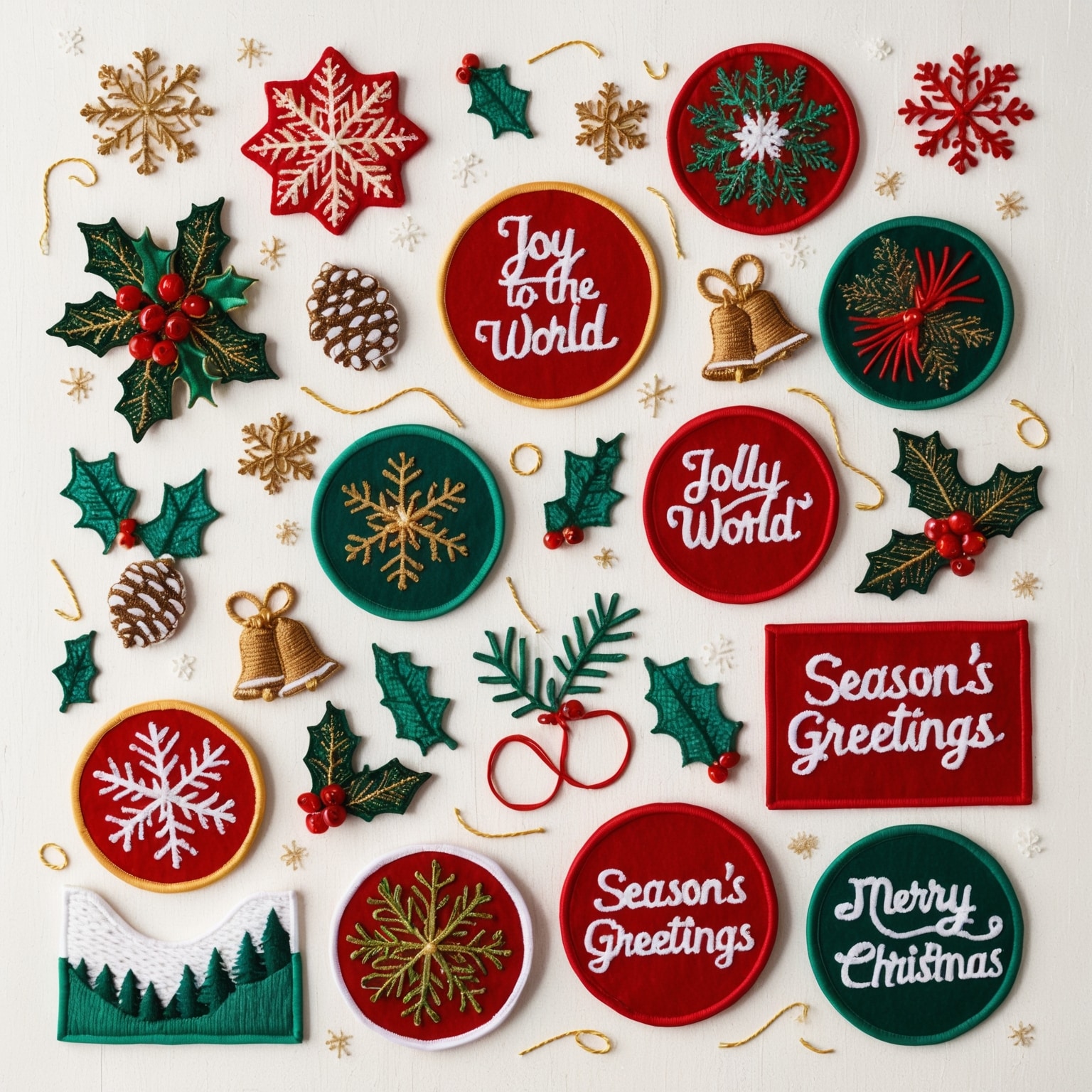Biker patches are more than just decorative pieces of fabric—they are powerful symbols that represent the identity, values, and affiliations of motorcycle clubs and their members. For those within the biking community, these patches communicate a wealth of information, often conveying deep meanings that are understood by those in the know. From the colors used to the symbols and designs chosen, every element of a biker patch is carefully considered and carries significance.
This article delves into the world of biker patches, exploring the hidden meanings behind the colors, symbols, and designs that adorn the jackets and vests of motorcycle enthusiasts. Whether you’re a seasoned rider or someone new to the world of biking, understanding the language of biker patches will give you greater insight into the culture and community of motorcyclists.
The Role of Biker Patches in Motorcycle Culture
To appreciate the meanings behind biker patches, it’s important first to understand their role within motorcycle culture. Biker patches are not just fashion statements—they are badges of honor, symbols of identity, and emblems of belonging within the biking community.
A Symbol of Identity and Affiliation
For members of motorcycle clubs, biker patches serve as a visual representation of their identity and affiliation. These patches, often worn on the back of a jacket or vest, indicate the club to which a rider belongs and their status within that club. The designs of these patches are typically unique to each club, featuring specific colors, symbols, and text that reflect the club’s history, values, and mission.
Wearing a biker patch is a way for riders to express their pride in their club and their commitment to its values. It also serves as a form of identification within the larger biking community, allowing riders to recognize fellow members and establish connections with other clubs.
A Sign of Rank and Achievement
Within motorcycle clubs, biker patches are also used to denote rank and achievement. Different patches and badges may indicate a rider’s position within the club’s hierarchy, such as whether they are a prospect (a potential member), a full-patch member (a fully initiated member), or an officer (a leader within the club). Additionally, special patches may be awarded for significant achievements, such as long-distance rides, participation in club events, or acts of bravery.
These patches are earned through dedication and service to the club, and wearing them is a point of pride for the rider. The process of earning and wearing these patches is an important part of the club’s culture, reinforcing the values of loyalty, brotherhood, and respect.
A Means of Communication
Biker patches also serve as a means of communication within the biking community. The symbols, colors, and designs used on these patches convey messages that can be understood by other riders. These messages may include information about the rider’s club affiliation, their beliefs or values, and their experiences or accomplishments.
For example, certain symbols may indicate that a rider belongs to an outlaw motorcycle club, while others may signify that the rider supports a particular cause or belief. By understanding the meanings behind these symbols and colors, riders can communicate their identity and intentions to others within the community.
The Structure of Biker Patches
Biker patches are typically composed of several elements, each with its own significance. These elements may include the top rocker, bottom rocker, center patch, and additional badges or patches. Understanding the structure of biker patches is essential to decoding their meanings.
The Top Rocker
The top rocker is the patch that arches across the top of the biker’s back, usually displaying the name of the motorcycle club. This is one of the most important elements of a biker patch, as it clearly identifies the club to which the rider belongs. The design and font used in the top rocker are often distinctive, reflecting the unique identity of the club.
In some cases, the top rocker may also include additional information, such as the club’s founding year or the chapter’s name if the club has multiple chapters in different locations.
The Center Patch
The center patch, also known as the back patch or main patch, is the most prominent element of a biker’s jacket or vest. This patch typically features the club’s emblem, logo, or symbol, which represents the core identity of the club. The design of the center patch is often intricate and highly symbolic, incorporating various elements that hold specific meanings for the club’s members.
For example, a center patch might feature an image of a skull, an animal, or a weapon, each of which can convey different messages about the club’s values, philosophy, or history. The colors used in the center patch are also significant, as they may reflect the club’s identity, allegiance, or beliefs.
The Bottom Rocker
The bottom rocker is the patch that arches across the bottom of the biker’s back, usually displaying the geographical location of the club or chapter. This can include the name of a city, state, or region where the club is based. The bottom rocker serves to identify where the club operates and is an important part of the club’s identity within the biking community.
In some cases, the bottom rocker may also include additional information, such as the club’s motto or slogan. This further reinforces the club’s values and mission, providing additional context for those who see the patch.
Additional Patches and Badges
In addition to the main patches (top rocker, center patch, and bottom rocker), bikers often wear additional patches and badges that carry their own meanings. These may include patches that indicate the rider’s rank or position within the club, such as “President,” “Vice President,” or “Sergeant at Arms.” Other patches may denote specific achievements, such as completing a long-distance ride or participating in a charity event.
Bikers may also wear patches that represent their personal beliefs, affiliations, or causes they support. For example, a rider might wear a patch that shows their support for military veterans, law enforcement, or a specific charitable organization. These patches add layers of meaning to the biker’s overall look, creating a visual narrative that reflects their identity and values.
Decoding the Colors of Biker Patches
Colors play a significant role in the design of biker patches, with each color carrying its own set of meanings and connotations. The choice of colors in a patch’s design can communicate a wide range of messages, from the club’s identity and philosophy to the rider’s personal beliefs or affiliations.
Black and White
Black and white are among the most common colors used in biker patches. Black is often associated with power, strength, and rebellion, making it a popular choice for clubs that want to project an image of toughness and independence. White, on the other hand, is often used to create contrast and highlight the design elements of the patch.
When used together, black and white can create a stark, bold look that is visually striking and easily recognizable. This color combination is often seen in the patches of outlaw motorcycle clubs, where it can symbolize a rejection of mainstream society and an embrace of a countercultural lifestyle.
Red
Red is a color that carries strong connotations of passion, danger, and aggression. In the context of biker patches, red is often used to symbolize courage, determination, and a willingness to fight for one’s beliefs. It is a color that commands attention and is often associated with clubs that have a reputation for being fierce and uncompromising.
Red can also represent loyalty and brotherhood, as it is a color that is often associated with the blood that binds members of a club together. In some cases, red may also be used to signify the club’s affiliation with a particular region or group, such as a red state or a group with a history of conflict.
Blue
Blue is a color that is often associated with loyalty, trust, and calmness. In biker patches, blue is used to convey a sense of reliability, stability, and honor. It is a color that is often chosen by clubs that value tradition, respect, and a sense of duty.
Blue can also represent a connection to law enforcement or the military, as it is a color that is commonly associated with uniforms and service. Clubs that include members with a background in law enforcement or the armed forces may choose blue as a way to honor their service and commitment to their country.
Green
Green is a color that is often associated with nature, growth, and renewal. In biker patches, green can symbolize a connection to the land, the environment, or a particular region. It is a color that is often chosen by clubs that emphasize a love of the outdoors, adventure, and exploration.
Green can also represent peace and harmony, as it is a color that is commonly associated with tranquility and balance. Clubs that prioritize camaraderie, friendship, and mutual respect may choose green as a way to reflect these values.
Yellow
Yellow is a color that is associated with energy, optimism, and warmth. In biker patches, yellow is often used to convey a sense of enthusiasm, positivity, and a love of life. It is a color that is often chosen by clubs that value fun, adventure, and a sense of community.
Yellow can also symbolize caution and awareness, as it is a color that is commonly used in warning signs and signals. In this context, yellow may be used to convey a sense of vigilance and preparedness, reminding riders to stay alert and aware of their surroundings.
Orange
Orange is a color that is associated with creativity, enthusiasm, and a sense of adventure. In biker patches, orange is often used to convey a sense of excitement, energy, and a love of the open road. It is a color that is often chosen by clubs that value individuality, self-expression, and a free-spirited approach to life.
Orange can also symbolize a connection to fire and the sun, as it is a color that is commonly associated with warmth and vitality. In this context, orange may be used to convey a sense of passion and intensity, reflecting the club’s dynamic and vibrant energy.
Purple
Purple is a color that is associated with royalty, luxury, and wisdom. In biker patches, purple is often used to convey a sense of prestige, honor, and respect. It is a color that is often chosen by clubs that value tradition, excellence, and a sense of dignity.
Purple can also represent a connection to spirituality and enlightenment, as it is a color that is commonly associated with the mystical and the divine. In this context, purple may be used to convey a sense of depth, insight, and a commitment to higher principles.
Gold and Silver
Gold and silver are colors that are associated with wealth, success, and achievement. In biker patches, these colors are often used to symbolize honor, distinction, and a high level of accomplishment. Gold and silver are often chosen by clubs that have a long history of excellence or by riders who have achieved a significant milestone or rank within the club.
These colors can also represent a connection to precious metals and the idea of something valuable and enduring. In this context, gold and silver may be used to convey a sense of permanence, resilience, and a commitment to the club’s legacy.
Decoding the Symbols of Biker Patches
In addition to colors, the symbols used in biker patches carry deep meanings and are often chosen to reflect the club’s identity, values, and beliefs. These symbols can range from animals and weapons to more abstract designs, each with its own unique significance.
Skulls
Skulls are one of the most common symbols found in biker patches, and they carry a range of meanings depending on the context. In general, skulls are associated with mortality, danger, and a fearless attitude. For many biker clubs, the skull represents a rejection of fear and an acceptance of the risks that come with the biker lifestyle.
In some cases, skulls may also symbolize rebellion and a defiance of societal norms. Clubs that identify as outlaw motorcycle clubs, or “1%ers,” often use skulls to convey their rejection of mainstream society and their embrace of a countercultural lifestyle.
Animals
Animals are frequently used in biker patches to symbolize the traits and qualities that the club values. Each animal carries its own set of meanings, and the choice of animal often reflects the club’s identity and philosophy.
- Eagles: Eagles are a common symbol in biker patches, representing freedom, power, and vision. The eagle is often associated with the idea of soaring above the ordinary and striving for greatness, making it a popular choice for clubs that value independence and excellence.
- Wolves: Wolves are symbols of loyalty, strength, and teamwork. In biker patches, the wolf often represents the close-knit bonds between club members and the idea of working together as a pack. Clubs that prioritize brotherhood and camaraderie may choose the wolf as their emblem.
- Lions: Lions are symbols of courage, leadership, and nobility. In biker patches, the lion represents the idea of standing strong in the face of adversity and leading with honor. Clubs that value bravery and leadership may choose the lion as their symbol.
- Snakes: Snakes are symbols of danger, transformation, and cunning. In biker patches, the snake often represents the idea of being unpredictable and adaptable, as well as the ability to strike when necessary. Clubs that value resilience and strategy may choose the snake as their emblem.
Weapons
Weapons are another common symbol found in biker patches, often representing strength, protection, and the willingness to defend one’s beliefs. The choice of weapon can carry specific meanings, reflecting the club’s values and approach to challenges.
- Swords: Swords are symbols of honor, bravery, and justice. In biker patches, the sword represents the idea of fighting for what is right and standing up for one’s principles. Clubs that value integrity and courage may choose the sword as their symbol.
- Axes: Axes are symbols of strength, power, and decisiveness. In biker patches, the axe represents the idea of taking action and making bold decisions. Clubs that value assertiveness and determination may choose the axe as their emblem.
- Guns: Guns are symbols of protection, authority, and vigilance. In biker patches, the gun represents the idea of being prepared to defend oneself and one’s club. Clubs that prioritize security and readiness may choose the gun as their symbol.
Crosses
Crosses are symbols of faith, sacrifice, and redemption. In biker patches, the cross often represents the idea of spiritual guidance and the importance of moral values. The specific design of the cross can carry additional meanings, depending on its style and origin.
- Iron Cross: The Iron Cross is a symbol of bravery and honor that originated in Germany. In biker patches, the Iron Cross represents the idea of standing strong in the face of adversity and upholding one’s values. It is often used by clubs that value tradition and resilience.
- Maltese Cross: The Maltese Cross is a symbol of protection and service that is often associated with firefighters and first responders. In biker patches, the Maltese Cross represents the idea of serving others and being ready to help those in need. Clubs that prioritize community service and support may choose the Maltese Cross as their emblem.
Other Symbols
Biker patches may also include a wide range of other symbols, each with its own unique significance. These symbols may be chosen to reflect the club’s values, beliefs, or experiences.
- Stars: Stars are symbols of guidance, inspiration, and achievement. In biker patches, stars may represent the idea of striving for excellence and following a guiding principle. Clubs that value ambition and vision may choose stars as part of their emblem.
- Chains: Chains are symbols of strength, unity, and connection. In biker patches, chains represent the bonds between club members and the idea of standing together as a united force. Clubs that prioritize brotherhood and solidarity may choose chains as part of their emblem.
- Lightning Bolts: Lightning bolts are symbols of power, speed, and intensity. In biker patches, lightning bolts represent the idea of taking quick and decisive action. Clubs that value energy and dynamism may choose lightning bolts as part of their emblem.
The Evolution of Biker Patches
Biker patches have evolved over the years, reflecting changes in the biking community and the broader cultural landscape. While the basic structure and symbolism of biker patches have remained consistent, new designs, colors, and symbols have emerged, adding layers of meaning to this rich tradition.
The Influence of Pop Culture
Pop culture has had a significant influence on the design of biker patches, with symbols and imagery from movies, music, and literature making their way into the designs. For example, skulls and flames, which are often associated with the rebellious spirit of rock and roll, have become common elements in biker patches.
Similarly, symbols from popular movies and TV shows, such as “Sons of Anarchy,” have influenced the design of biker patches, with clubs adopting elements from these fictional depictions of biker culture. This blending of pop culture and biker traditions has created a dynamic and evolving visual language for biker patches.
The Rise of Independent Riders
In addition to traditional motorcycle clubs, there has been a rise in independent riders who choose to wear custom biker patches that reflect their individual identity and beliefs. These patches often feature personalized designs that incorporate symbols, colors, and text that are meaningful to the rider.
For independent riders, custom biker patches are a way to express their unique personality and connect with others who share similar interests or values. These patches may include elements such as personal mottos, favorite quotes, or symbols that represent the rider’s hobbies, beliefs, or life experiences.
The Globalization of Biker Culture
As biker culture has spread around the world, biker patches have evolved to reflect the diverse cultures and traditions of different regions. International motorcycle clubs have developed their own unique patch designs, incorporating symbols, colors, and imagery that are specific to their cultural context.
For example, biker patches from European clubs may feature symbols such as castles, knights, or historical figures, while patches from Asian clubs may incorporate elements of traditional art or mythology. This globalization of biker culture has enriched the visual language of biker patches, adding new layers of meaning and symbolism.
Understanding the Language of Biker Patches
Biker patches are a rich and complex form of visual communication, with each color, symbol, and design element carrying its own unique meaning. For members of the biking community, these patches are not just decorative items—they are powerful symbols of identity, pride, and belonging.
By understanding the hidden meanings behind biker patches, you gain a deeper insight into the culture and traditions of motorcycle clubs and the values that define the biking community. Whether you’re a rider yourself or simply someone interested in the world of motorcycling, decoding the language of biker patches offers a fascinating glimpse into a subculture that values loyalty, brotherhood, and freedom.
If you are interested in purchasing high-quality custom patches, feel free to call us at 1-877-503-8485 or fill out one of our FREE quotes here




